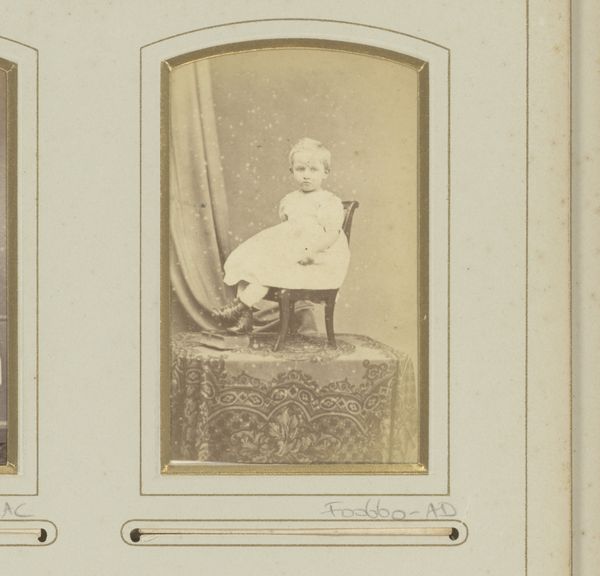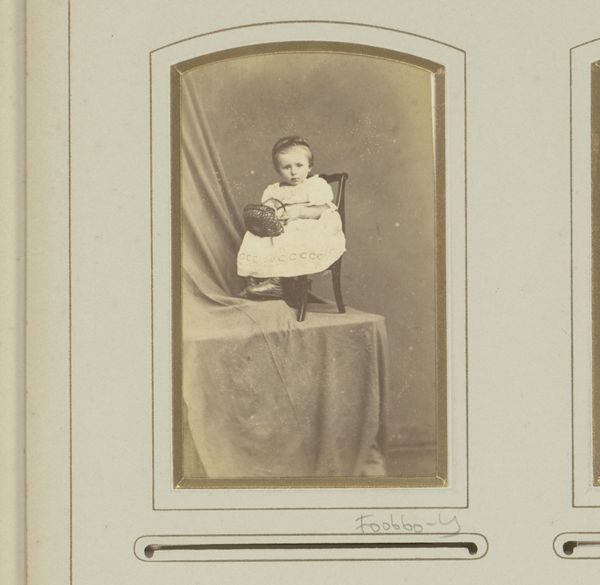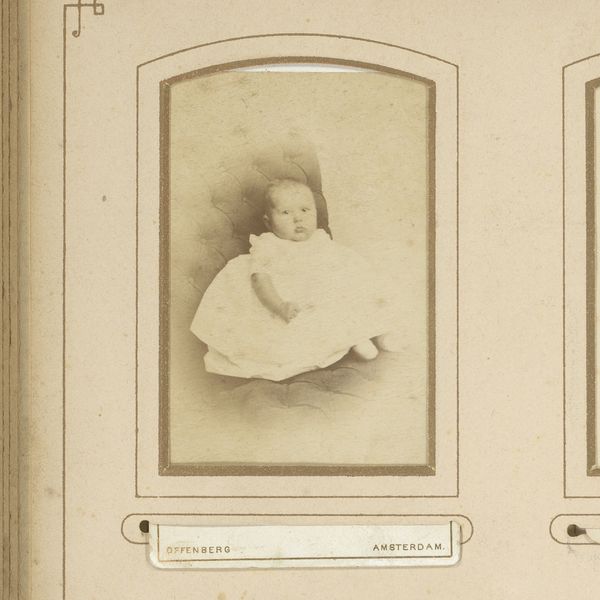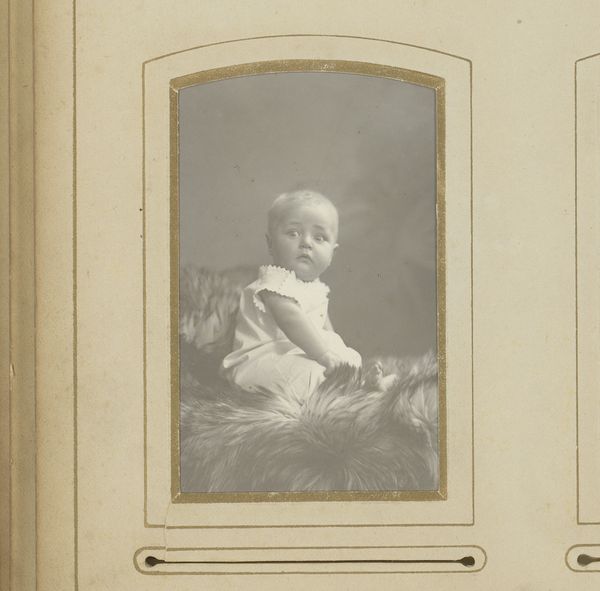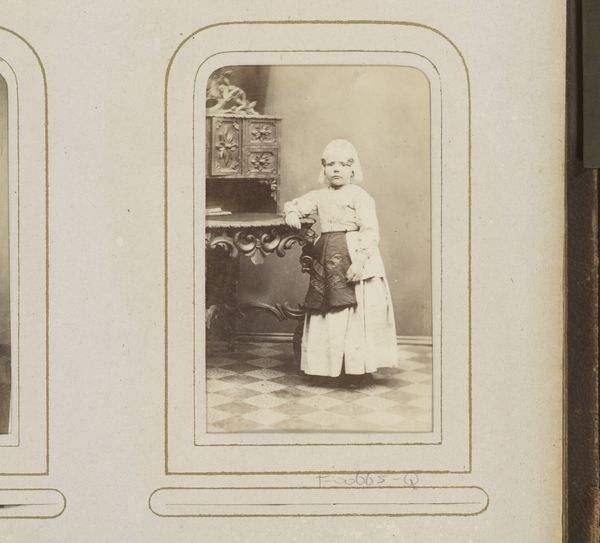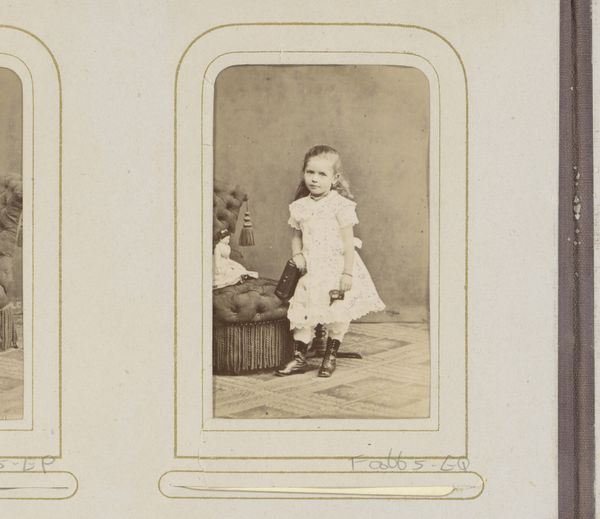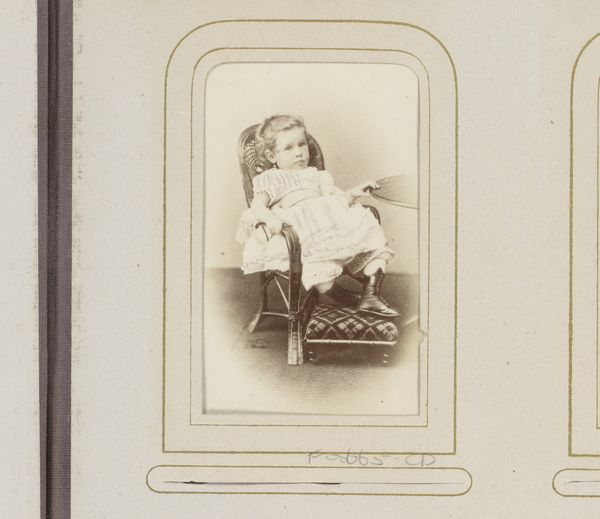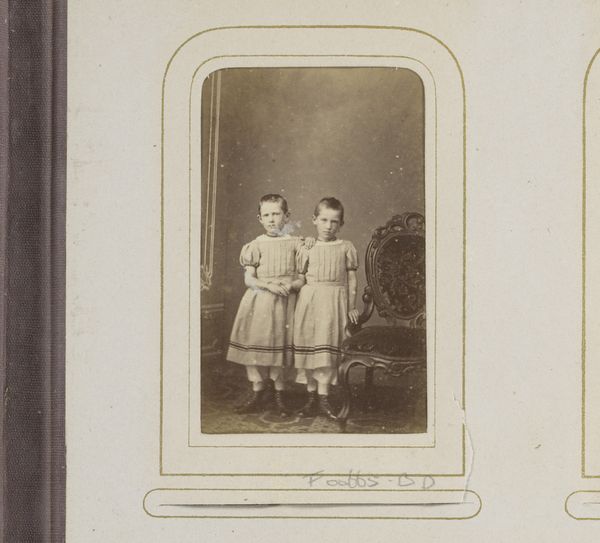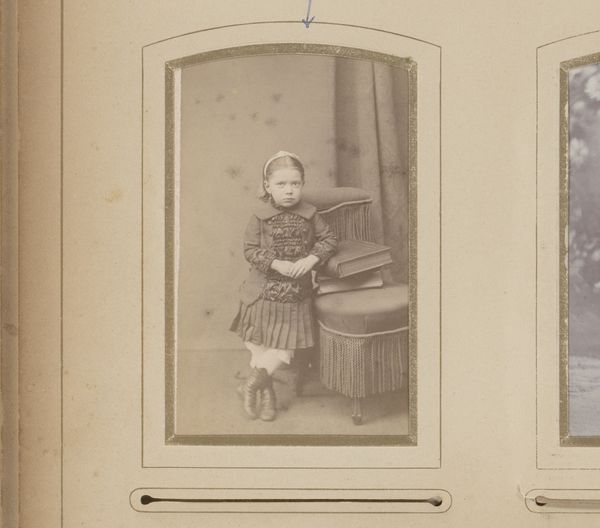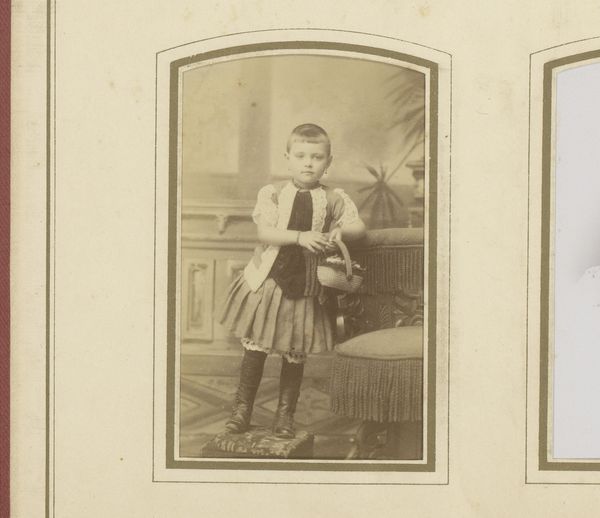
photography
#
portrait
#
photography
#
historical photography
#
genre-painting
Dimensions: height 82 mm, width 50 mm
Copyright: Rijks Museum: Open Domain
Editor: Here we have "Portret van Emma Posh," a photograph taken sometime between 1861 and 1890 by Albert Greiner, currently held at the Rijksmuseum. Looking at it, I’m struck by the young girl's very formal posture, and I wonder, what do you see in this piece beyond just a historical portrait? Curator: It's more than just a record of appearance, isn't it? Think about photography’s rise coinciding with shifting societal expectations. This controlled environment—the girl's pose, the meticulously arranged furniture—speaks to a rising Victorian ideal of domesticity and female virtue. Can we read it as an example of power dynamics in gender? Editor: That’s an interesting take. I hadn't considered how constructed the image is. Is that what those curtains in the background signal? Curator: Precisely! Those elements weren’t arbitrarily selected; they signify a curated identity meant for public consumption. Now, who has access to that kind of curated self? Who is allowed to create their own identity? Do you see anything in her face that shows the discomfort with that social demand? Editor: I think I do... Her slightly tense posture now seems more telling, as though she were pushing against those constrictions. I'm glad I now can look at this piece and ask those questions of access and the tension it creates for those involved. Curator: Absolutely. By questioning these historical power structures, we can understand how visual representations impact contemporary issues of identity and representation today. Thank you for this enlightening conversation!
Comments
No comments
Be the first to comment and join the conversation on the ultimate creative platform.

